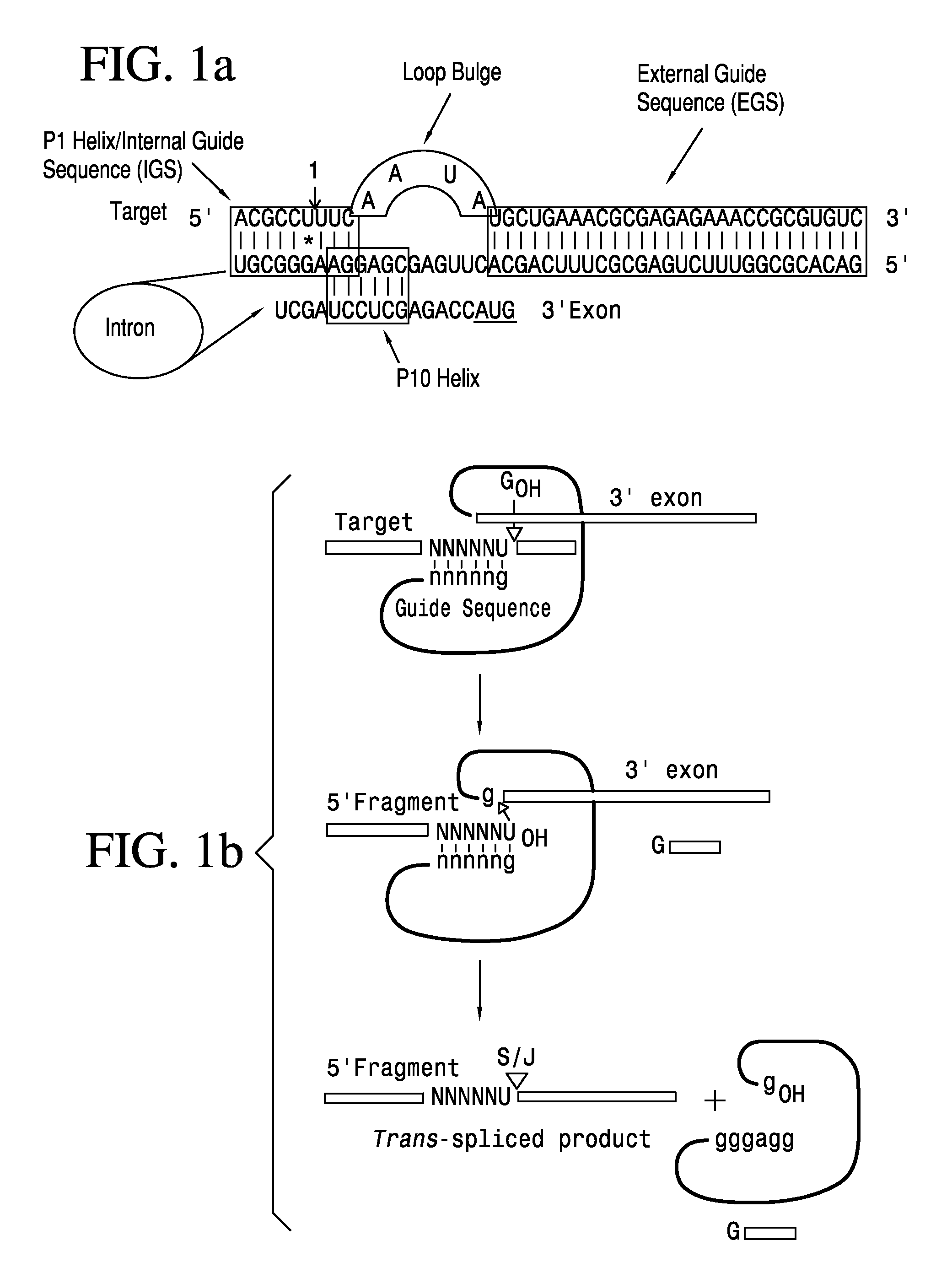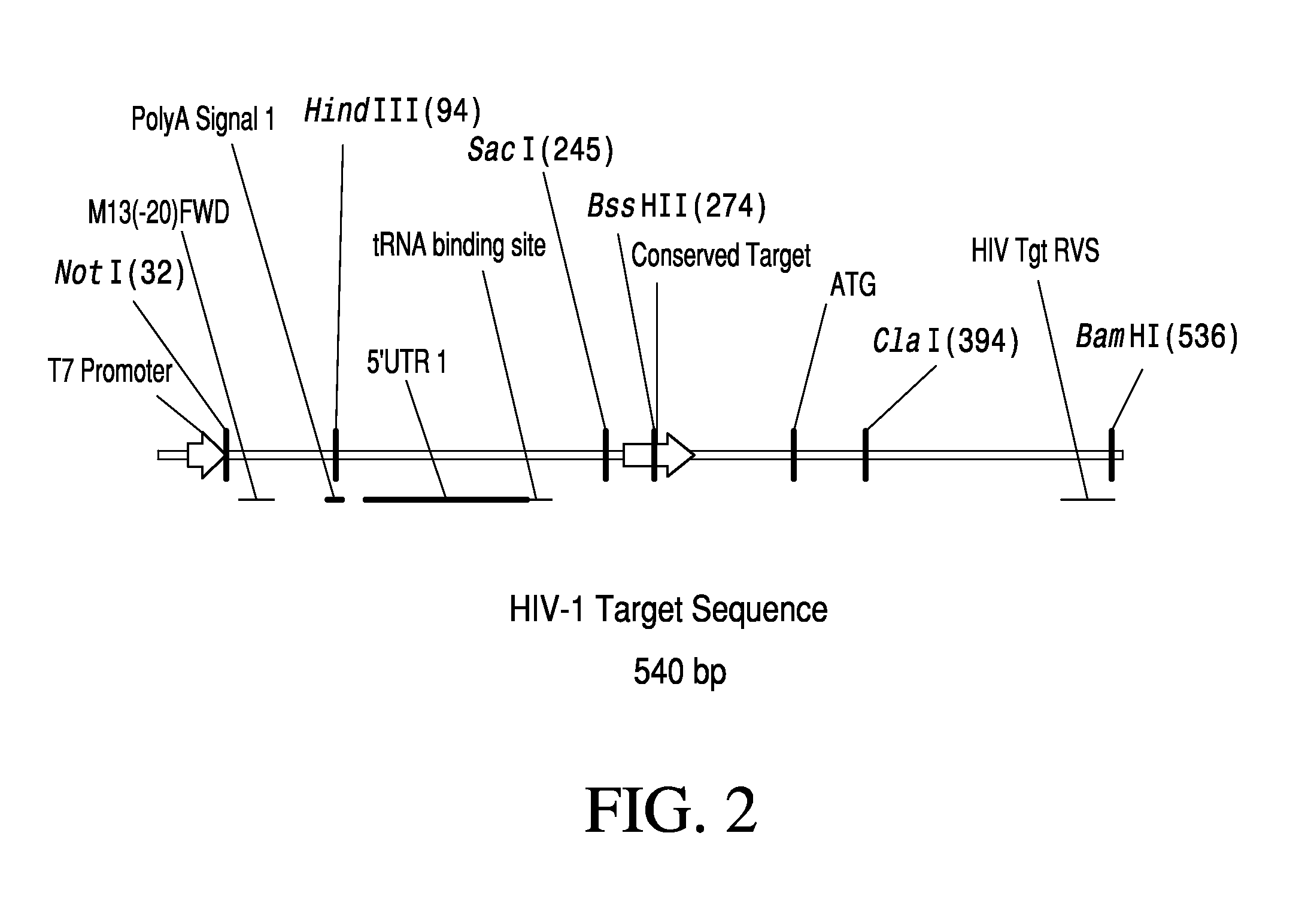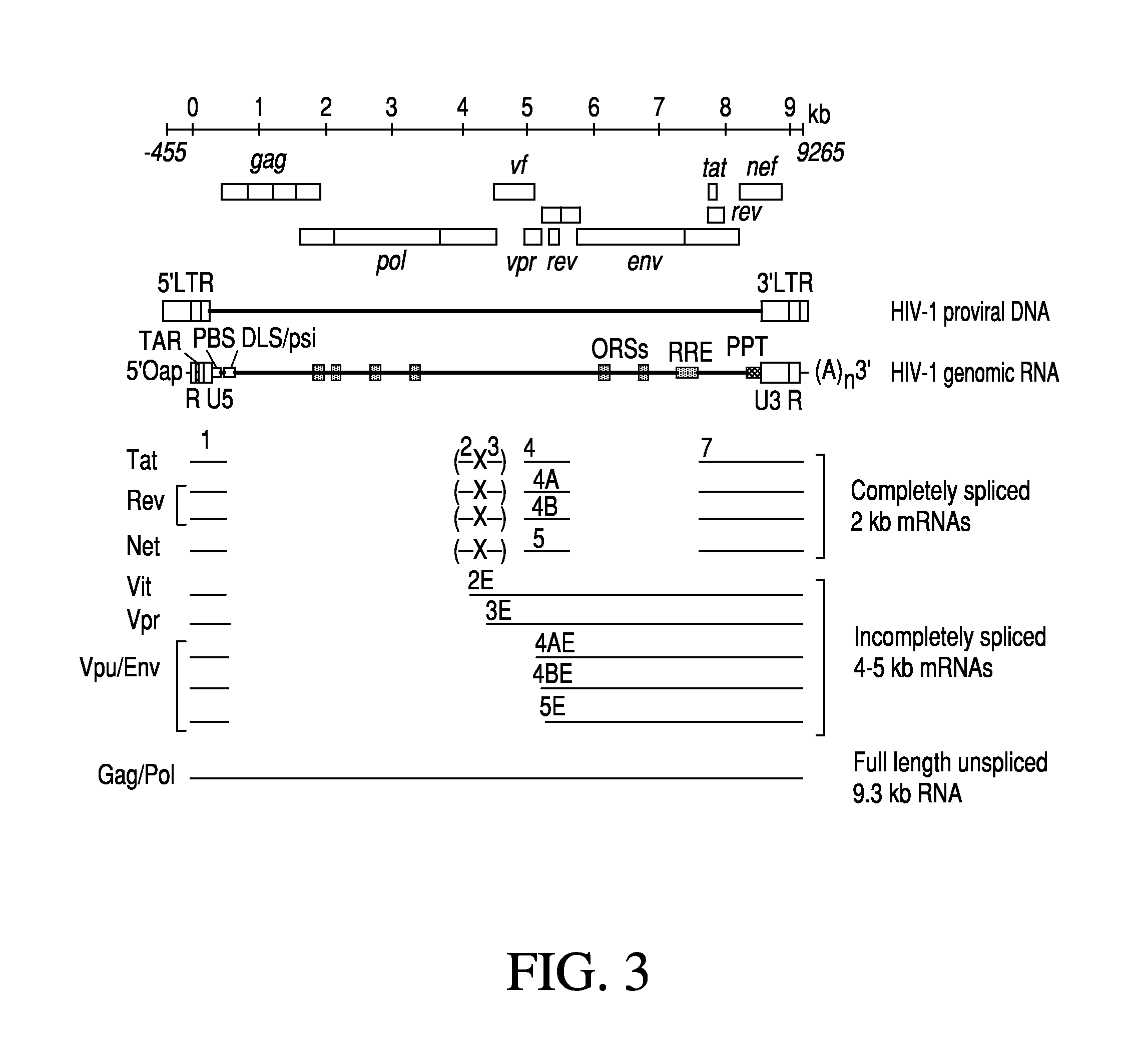Anti-HIV Group I Introns and Uses Thereof in Treating HIV Infections
a technology of introns and hiv, which is applied in the field of anti-hiv group i introns, can solve the problems that haart treatment alone cannot provide a cure for the infection, cannot be generally applicable to humans, and cannot be able to eliminate the virus from the infected patient, so as to reduce the viral load, reduce the probability, and eliminate the virus from the infected individual
- Summary
- Abstract
- Description
- Claims
- Application Information
AI Technical Summary
Benefits of technology
Problems solved by technology
Method used
Image
Examples
example 1
Construction of Retroviral Vectors
[0039]The present example demonstrates the construction and use of retroviral vectors containing αHIV-Grp1 introns having a 3′ apoptosis-inducing gene to establish transformed cells that constitutively express these selected Group I introns, and that may be used in the treatment and cure of a human immunodeficiency virus in an animal. These transformed cells are challenged with active HIV virus to demonstrate the efficacy of the introns in suppressing lentivirus infections in the transformed cell cultures. Retrovirus vectors will be constructed for transduction of these expressed introns in HEK293 cells.
[0040]Following selection and cell sorting, the effectiveness of these introns in suppressing HIV infection of these transformed cell cultures will be assessed.
example 2
Apoptosis-Inducing Gene Products for Suppression of HIV Infection
[0041]The present example demonstrates the effectiveness of alternative apoptosis-inducing gene products for suppression of HIV infection in the present αHIV-Grp1 intron strategy. Initial examinations into apoptosis inducing gene products focused on the tBax inducer. While the tBax protein has proven to be an effective inducer of apoptosis in both the mosquito cell and human cell applications, it does not have enzymatic activity, and may therefore be inferior to other inducers of apoptosis such as Caspases. The present invention will employ certain caspases as an alternative 3′ exon for apoptotic induction following trans-splicing.
example 3
Hematopoietic Stem Cell Replacement
[0042]The present example presents a transgenic αHIV-Grp1 intron hematopoietic stem cell replacement strategy in a mouse system. A chimeric HIV virus will be used that has an the envelope coding domain from an ecotropic MLV that restricts replication of the chimeric virus to rodents (Potash et al., 2005). This will be used to establish infections in young adult mice. These mice will serve as models for the present transduced hematopoietic stem cell therapies using the αHIV-Grp1 introns.
[0043]While this proposal is designed to validate this approach using a less costly and more rapid mouse system, the data provided will serve to provide support for the successful expectation of the use of this approach in simian models.
[0044]This invention provides a means of eradicating HIV virus from an infected individual. This strategy will be effective either alone or in conjunction with other strategies currently being used and / or proposed for use for transduc...
PUM
| Property | Measurement | Unit |
|---|---|---|
| Cell death | aaaaa | aaaaa |
| Antimicrobial properties | aaaaa | aaaaa |
Abstract
Description
Claims
Application Information
 Login to View More
Login to View More - R&D
- Intellectual Property
- Life Sciences
- Materials
- Tech Scout
- Unparalleled Data Quality
- Higher Quality Content
- 60% Fewer Hallucinations
Browse by: Latest US Patents, China's latest patents, Technical Efficacy Thesaurus, Application Domain, Technology Topic, Popular Technical Reports.
© 2025 PatSnap. All rights reserved.Legal|Privacy policy|Modern Slavery Act Transparency Statement|Sitemap|About US| Contact US: help@patsnap.com



